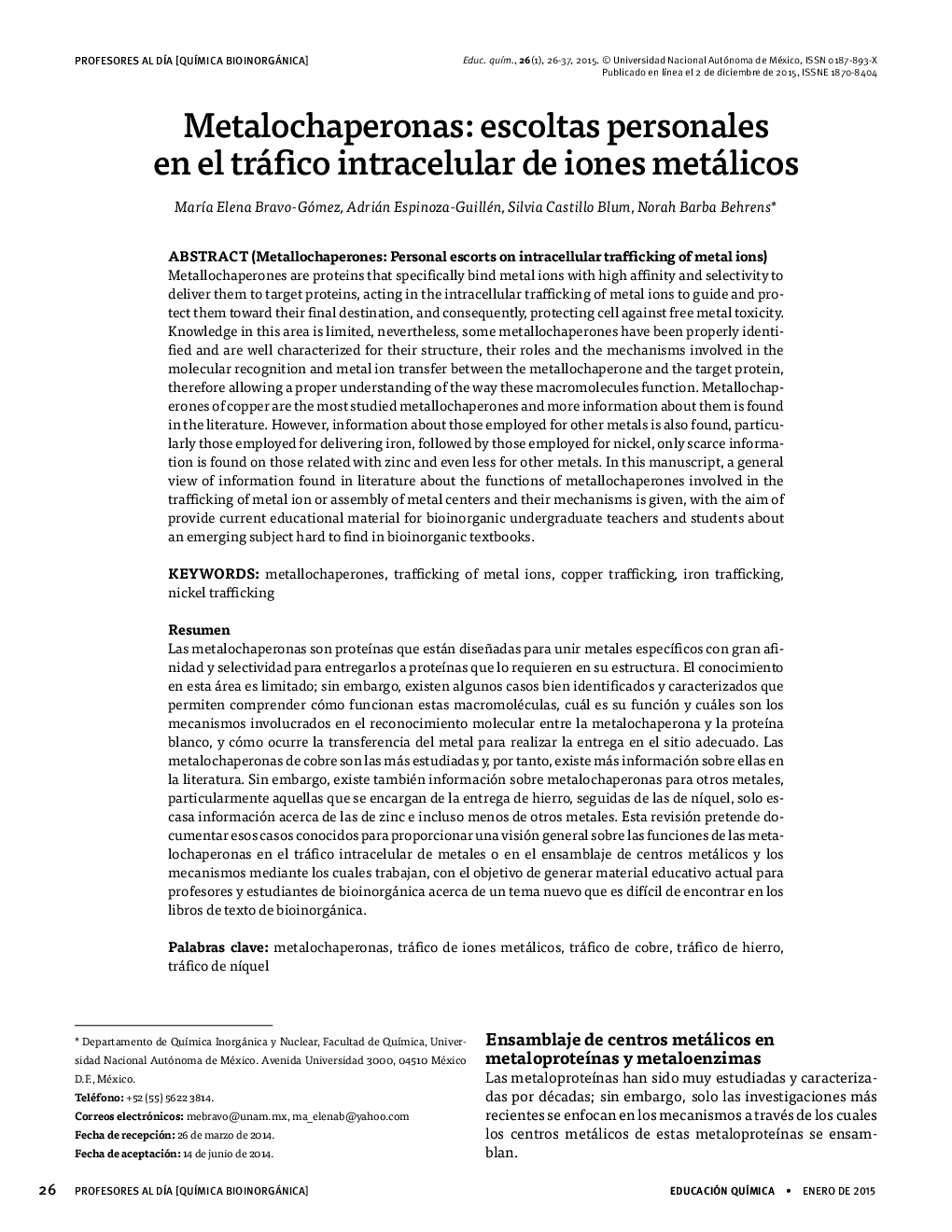| Article ID | Journal | Published Year | Pages | File Type |
|---|---|---|---|---|
| 1184459 | Educación Química | 2015 | 12 Pages |
Metallochaperones are proteins that specifically bind metal ions with high affinity and selectivity to deliver them to target proteins, acting in the intracellular trafficking of metal ions to guide and protect them toward their fnal destination, and consequently, protecting cell against free metal toxicity. Knowledge in this area is limited, nevertheless, some metallochaperones have been properly identified and are well characterized for their structure, their roles and the mechanisms involved in the molecular recognition and metal ion transfer between the metallochaperone and the target protein, therefore allowing a proper understanding of the way these macromolecules function. Metallochaperones of copper are the most studied metallochaperones and more information about them is found in the literature. However, information about those employed for other metals is also found, particularly those employed for delivering iron, followed by those employed for nickel, only scarce information is found on those related with zinc and even less for other metals. In this manuscript, a general view of information found in literature about the functions of metallochaperones involved in the trafficking of metal ion or assembly of metal centers and their mechanisms is given, with the aim of provide current educational material for bioinorganic undergraduate teachers and students about an emerging subject hard to find in bioinorganic textbooks.
ResumenLas metalochaperonas son proteínas que están diseñadas para unir metales específicos con gran afinidad y selectividad para entregarlos a proteínas que lo requieren en su estructura. El conocimiento en esta área es limitado; sin embargo, existen algunos casos bien identificados y caracterizados que permiten comprender cómo funcionan estas macromoléculas, cuál es su función y cuáles son los mecanismos involucrados en el reconocimiento molecular entre la metalochaperona y la proteína blanco, y cómo ocurre la transferencia del metal para realizar la entrega en el sitio adecuado. Las metalochaperonas de cobre son las más estudiadas y, por tanto, existe más información sobre ellas en la literatura. Sin embargo, existe también información sobre metalochaperonas para otros metales, particularmente aquellas que se encargan de la entrega de hierro, seguidas de las de níquel, solo escasa información acerca de las de zinc e incluso menos de otros metales. Esta revisión pretende documentar esos casos conocidos para proporcionar una visión general sobre las funciones de las metalochaperonas en el tráfico intracelular de metales o en el ensamblaje de centros metálicos y los mecanismos mediante los cuales trabajan, con el objetivo de generar material educativo actual para profesores y estudiantes de bioinorgánica acerca de un tema nuevo que es difícil de encontrar en los libros de texto de bioinorgánica.
